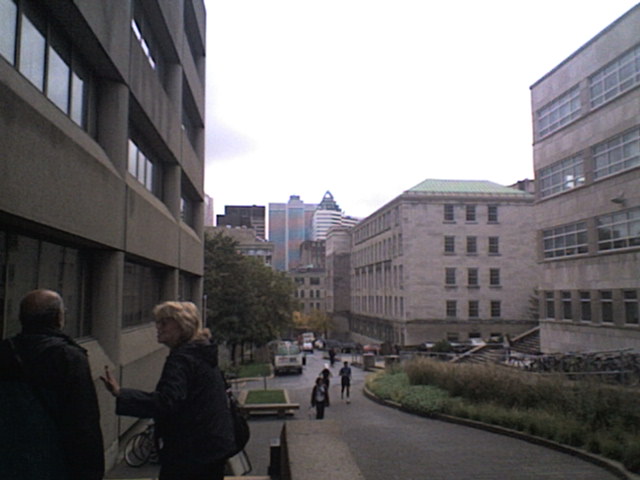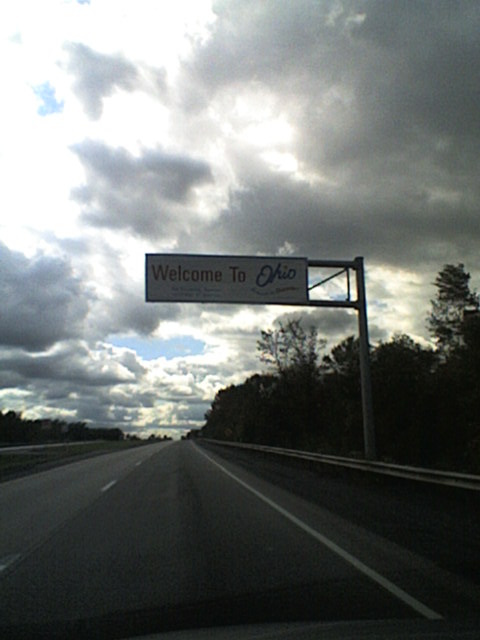I feel halfway home. I got up early this morning, after a nice solid 8 hours of sleep, and hit the road an hour later. This put me into Midway Airport four hours ahead of my flight, but I really like killing time at Midway. They have a decent food court central to all three terminals; there is a cafe in terminal A with questionable service but decent espresso; the rocking chairs are a nice touch.
This is giving me lots of time to look back on the last month. I’ve learned a lot, and I want to share some of that here. In many ways, a seminar tour is less about what the speaker has to say (although it’s important to do that well) and more about what a speaker can learn from the many physicists you encounter. I thought I knew my field pretty well and pretty globally; I can converse about the James Webb Space Telescope, discuss the waning of the solar wind, engage in a little bit of solid state physics (symmetry breaking, baby!), and even see the connection between plasma physics and the high-precision Mu2E experiment. But there was so much I didn’t know, which only serves to remind me that there is a lot more I still don’t know.
Given the small delay in the continuance of LHC operations, I tried to take the pulse of all the U.S. LHC physicists that I met. I’d say the mood was actually pretty upbeat, albeit sprinkled with some frustration. However, it’s far from the frustration I remember from the early days of Tevatron Run II, or just after the cancellation of the SSC, or BTeV, or any of a number of other projects that stalled or were killed. In fact, I’d say most people are pragmatic about this. Nobody still actually knows what damage has been done to the LHC, or whether the cause is systemic and will require a full scale repair on the whole ring to prevent further failure. Nobody seems to know anything about what the accelerator division does, or does not, know about the accident. That said, the ATLAS and CMS experimentalists take this as an opportunity to finish a number of things ahead of formal turn-on of the machine in the spring of 2009.
I learned a lot at Syracuse about an LHC experiment that doesn’t get a lot of mention in the U.S.: LHCb. Only one U.S. institution (Syracuse) is a member of this collaboration, a b-physics experiment slated for operation later than the startup of CMS and ATLAS. You can find out more about LHCb on their CERN website [1] or, even better, in their technical design reports [2]. I was reminded that a key goal of LHCb is the measurement of the CKM angle named “gamma”, which I’ve discussed previously [3].
It is fitting that the Nobel prize this year recognized the deep understanding that Kobayashi and Maskawa had about nature; that in order to acommodate the matter/anti-matter asymmetry in our universe, there must be _at least_ three generations of quarks. Their prediction of the existence of a bottom and top quark, and the subsequent discovery of both over a period of twenty years, ushered in an era of exploration of the heavy quark sector. LHCb will continue the work of testing the K-M theory, finally giving us a precision measurement of the last angle of unitarity triangle.
Dark matter. Sounds sweet. What is it? Nobody knows. A lot of people are trying to figure that out. I met a number of them on this trip, working on many different technologies. An MIT group, in conjunction with collaborators at several other institutions, is working on a time projection chamber (TPC) [4] which can detect both the magnitude and direction of a nucleus recoiling off a dark matter particle. Syracuse and Case-Western are both involved in the Cryogenic Dark Matter Search (CDMS), which Jodi works on; Case is transitioning to a newer technology, the use of the liquid noble gas Xenon to detect the nuclear recoil of a dark matter particle. This new experiment, LUX [5], builds on existing expertise from the XENON10 experiment and scales it up (up up!) to a huge detector to be sited in the Homestake Mine in North Dakota.
I had the chance to see some of the R&D that’s going on right now with the xenon, and meet students and post-docs working on this new project. In contrast to the more widespread bleakness I see in the collider community (excepting the LHC), the dark matter community seems energized and enthusiastic. So far, they have managed to retain federal investment in their work, though nobody is sure that any of these experiments is guaranteed to be fully funded. That doesn’t seem to dampen the mood, and certainly the students are a good barometer for that field of exploration.
One of the unexpected things I learned on this trip was some nuclear particle physics. While at UIUC yesterday, I had the chance to meet with a professor who works on a number of experiments, including fixed target experiments, RHIC, a neutron electric dipole moment measurement, and now a reactor neutrino experiment (Daya Bay). He was very interested in discussing some work he had done on the production of Upsilon mesons via nuclear collisions. By looking at the dilepton decays of Upsilon mesons, where the Upsilons are produced by the nuclear collisions between two protons or a proton and a deuteron, you can see the effect that gluons have inside the nucleons.
We’re taught that protons and neutrons are made up of three quarks each – the “valence” quarks. The proton is up+up+down, and the neutron is up+down+down. There are no anti-quarks in protons and neutrons, so the only way that a valence quark can annihilate with its anti-quark is if it encounters one of the “sea” quarks that pop in and out of existence inside the nucleon. For instance, the proton’s valence quarks (uud) are bound tightly together by gluons. The gluons stick not just to the quarks, but to each other. For brief moments of time, a gluon can convert into a quark-antiquark pair, which then annihilate back into a gluon. These fleeting pairs are the “sea” quarks.
If, in a moment when a proton meets another proton, a valence quark in one encounters a sea anti-quark in the other, annihilation into a photon can occur and produce a pair of leptons (like an electron and a positron, or a muon and an anti-muon). Another way to produce leptons is to have the gluons in one proton encounter the gluons in another; they then fuse into quarks, which form hadrons and decay into a lepton pair. The sea quarks in a neutron and a proton can have a big impact on the outcome of the collisions, since the neutron and proton contain difference valence quarks. However, they contain the same gluons; collisions that involve gluons interacting are the same, regardless of whether the proton hits a neutron or another proton. In other words, the strong force is “blind” to the quark content of the nucleon.
The paper I was shown yesterday beautifully illustrates this effect [6]. By looking at the production and decay of Upsilons from the nucleon collisions, one is sensitive to only the gluon interactions, which are blind to the kind of nucleon being collided. On the other hand, if you look at “Drell-Yan” production – that is, quark + anti-quark –> l+ l- – this is driven by annihilations of a valence and sea quark and one is sensitive to the composition of the nucleon. It’s a really beautiful observation of these subtle differences in the role of the strong force in the nucleon, and a way in which one can “see” the impact of gluons and sea quarks in the nucleon. The valence quarks appear as a small part of the rich physics inside a proton or a neutron.
It’s been great, but I want to get home very badly. Just a few more hours, and I’ll be on the flight home.
[1] http://lhcb.web.cern.ch/lhcb/
[2] http://lhcb.web.cern.ch/lhcb/TDR/TDR.htm
[3] http://steve.cooleysekula.net/blog/2008/09/30/from-syracuse-to-montreal/
[4] http://en.wikipedia.org/wiki/Time_projection_chamber
[5] http://www.luxdarkmatter.org/
[6] http://www.slac.stanford.edu/spires/find/hep/www?irn=7837712



